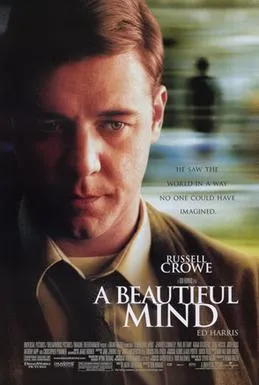Historical accuracy of A Beautiful Mind

Historical accuracy of A Beautiful Mind

Characters
John Nash
The film portrays Nash's mathematical genius and struggles with schizophrenia. However, it simplifies and romanticizes his life, omitting or altering certain aspects of his personal history and the nature of his illness.
Alicia Nash
Alicia Nash's support of John is a central theme. While she was indeed a crucial figure in his life, the film's portrayal of their relationship is somewhat idealized and omits some of the difficulties they faced.
Charles Herman
Charles Herman is a fictional character representing John Nash's hallucinations. Nash never saw a character like Charles Herman.
William Parcher
William Parcher is another fictional character representing Nash's paranoid delusions. He adds a thriller element to the film, but is not based on any real person.
Martin Hansen
While Nash had academic rivals, Martin Hansen is a composite character. The film uses him to illustrate the competitive academic environment and Nash's early struggles.
Sol
Sol is a composite character, representing Nash's colleagues and friends. The film uses him to portray the social dynamics of the time.
Story
Nash's brilliance
John Nash was a genuinely brilliant mathematician who made groundbreaking contributions to game theory.
Schizophrenia diagnosis
Nash was diagnosed with schizophrenia, significantly impacting his life and career.
Government code breaking
While the film depicts Nash working for the Department of Defense breaking Soviet codes, there's no evidence this happened in reality.
Spy conspiracies
The elaborate spy subplot involving Parcher and secret missions is entirely fabricated for dramatic effect.
Violent tendencies
While Nash's illness manifested in paranoia and delusions, accounts of violent behavior are exaggerated in the film.
Romantic relationship
The film romanticizes the relationship with Alicia, downplaying the challenges they faced due to Nash's illness.
Nash's other relationships
The film omits significant aspects of Nash's life, including his relationship with Eleanor Stier and their son.
Abandonment of child
The film portrays Nash abandoning his child in a bathtub during a psychotic episode. This did not happen in reality.
Electroconvulsive therapy
Nash did undergo insulin coma therapy and electroconvulsive therapy, though their portrayal in the film is dramatized.
Nobel Prize win
John Nash won the Nobel Prize in Economics in 1994 for his work on game theory.
Managing his illness
The film captures the struggle and resilience of living with schizophrenia, though it simplifies the complexities of the illness.
Support from colleagues
While some colleagues were supportive, the film idealizes the academic community's response to mental illness.
